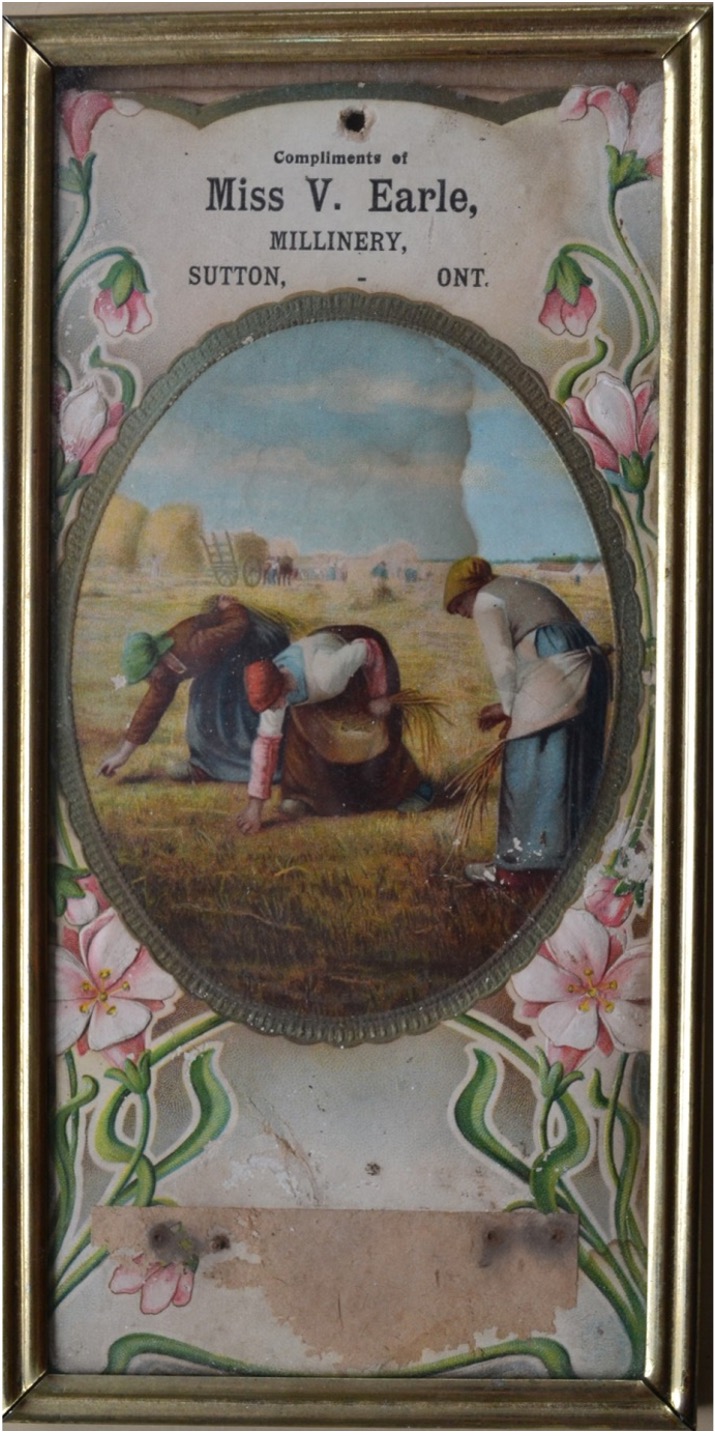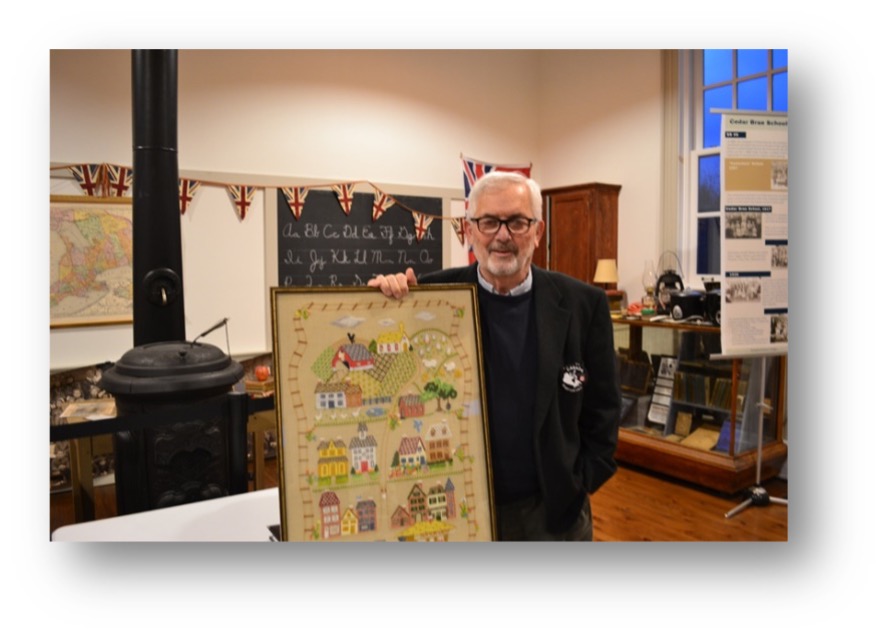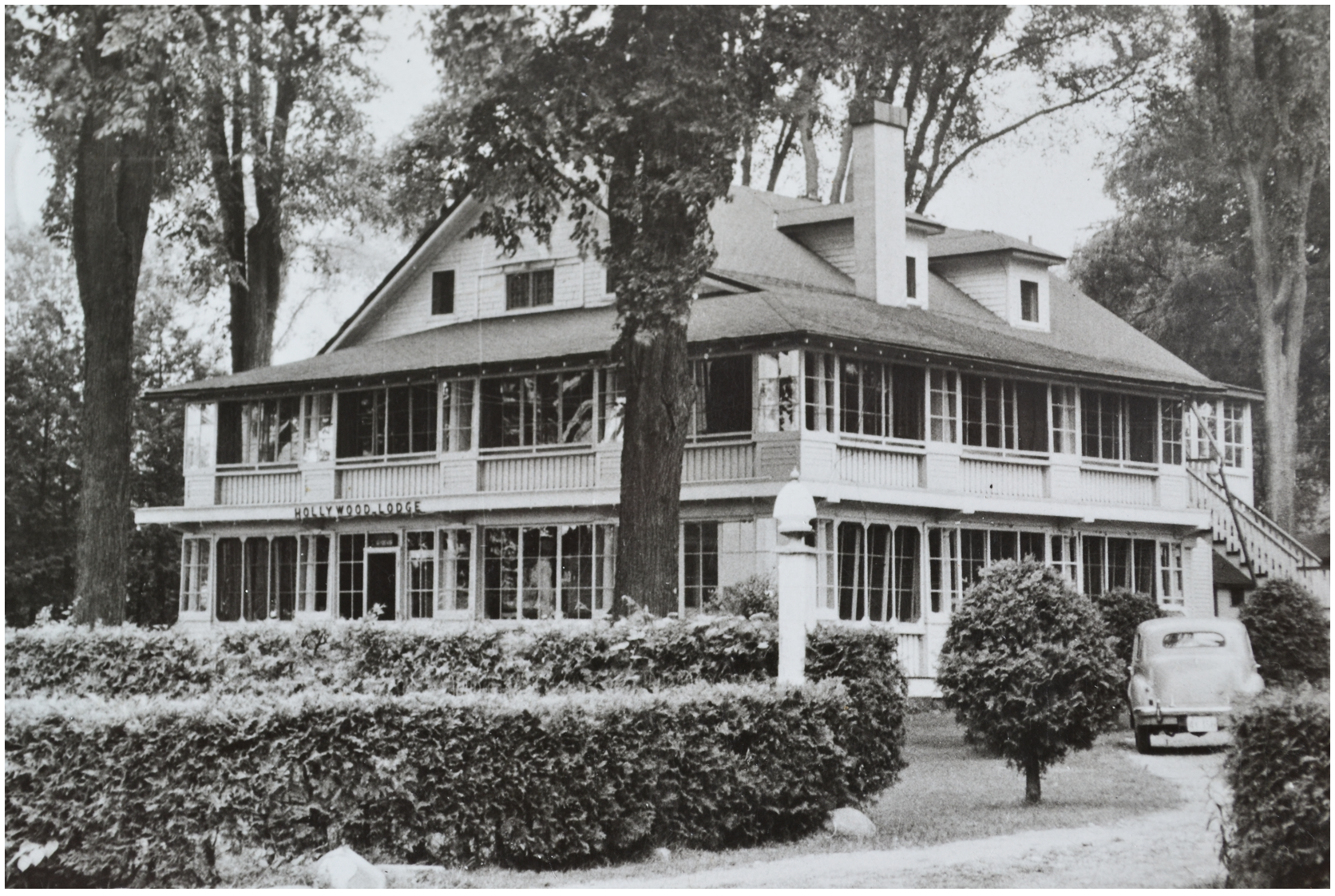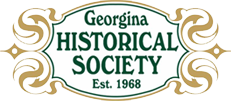Click to Download the PDF
Download the Word Doc
President’s Message
Another summer season is upon us, but we haven’t seen many of those lovely warm spring mornings that we like so much. On the other hand, I’m sure that it won’t be too long before we are complaining that it’s too hot and sunny, could we please have some rain. Such is life in Canada.
As you have probably heard by now, the Georgina Pioneer Village will now be known as the Georgina Village Museum. The Village is also enjoying it’s fiftieth year of existence this year. When you think about it, 1925 was 50 years removed from 1975 when the Village was established, and now 2025 is fifty years removed from 1975. We have seen at least as many changes in the last fifty years as what had been seen in the fifty years before that, so the name change allows the museum to celebrate much more than just the pioneering days. Who remembers disco, the Ford Pinto, or the Toronto Maple Leafs winning the Stanley Cup? Okay, so the Stanley Cup thing was 57 years ago, but who’s counting?
Speaking about the 50th anniversary of the Georgina Village Museum, the Town of Georgina is planning a grand opening to be held on Saturday May 31st, and we’d love to see as many members of the Georgina Historical Society as can make it turn out for the day. The Village will be open, and this will be a great opportunity for your family and friends to see the Georgina Village Museum in its best light.
Our next general meeting will be on Tuesday May 20 at the schoolhouse at the Village, and Tom Glover will be speaking to us about the importance of getting the stories of your life, and of your family, documented before they are forgotten. And we have a special treat in store for our June general meeting, we will be meeting at the Christ Church in Roches Point for a tour of the church and cemetery. Please stay tuned for further details.
I hope that all is well with everyone, that’s about it from me for now, I’m looking forward to seeing you all at our next general meeting.
Kindest regards, Paul
Found in a wall!
by Paul Brady

This interesting piece of ephemera came to us last week. Found inside a wall of an old house in Sutton that was under renovation, it is the top of a calendar of a type that would be ordered from a travelling salesman as an advertising handout. The calendar is missing, but someone thought enough of the image to keep it as a decoration. These items were never meant to survive, and to find one in this condition is quite rare.
Especially interesting is the business that ordered these calendars. Located in Sutton, it’s hard to imagine a time when a milliner’s shop could generate enough business to support itself, let alone have enough cash flow to warrant the purchase of this type of a give-away. It also raises the question of where the shop was located. Did she have a storefront, perhaps in the Queens Hotel on High Street, or was she working out of her home? We’re also wondering what year this would be, but guessing that it is from the 1920’s would make this item a hundred years old.
Another interesting fact is that Sutton was the commercial centre for the south shore of Lake Simcoe. The railway depot brought business into Sutton, so the local farmers would be shipping their products or picking up supplies and the radial line would also be delivering people and goods. As a bustling little town during this period, a specialist shop like a milliner, dress maker or menswear does make sense.
Maybe one of our members can fill in some details about Miss Earle and her hat making enterprise, we’d love to learn more.
Rob Grossi appears at our April 2025 general meeting

Our April 2025 general meeting at the schoolhouse was a real treat. Former Town of Georgina mayor and well-known gentleman around town Rob Grossi shared some of his stories and memories of his time as a long time Georgina resident and mayor. He also brought along for us to see a needle-point picture that was made by Nena Marsden and presented to him by Nena as a symbol of thanks for his support of the Georgina Historical Society, and the Georgina Village Museum. His stories and insights were appreciated by the audience, and after his presentation Rob graciously answered questions from the group. It was a wonderful evening, thanks again to Rob Grossi for taking time out from his busy schedule to spend time with us.
Where in Georgina?
Here’s this month’s mystery location. What is the building and where was it located?

By the numbers: Celebrating Mom
The following historical information about Mother’s Day was found and originally posted on https://www.cbc.ca/news/canada/by-the-numbers-celebrating-mom-1.795711 and also on https://fathersdaycanada.ca/mothers-day-in-canada-meaning-history-celebrations-observance-dates-2020-2030/. We have adapted and borrowed some of the contents from these websites for publication in our newsletter. Ed.
Canada began celebrating mothers on the second Sunday in May around 1911. On the 114th anniversary of Mother’s Day, the we take a brief look at the origins of the special day to honour moms. The modern concept of Mother’s Day has its roots in the United States. The holiday was established thanks to the efforts of Anna Jarvis, who campaigned in the early 20th century to create a formal holiday to honour mothers. Her campaign succeeded and by 1914, U.S. President Woodrow Wilson officially proclaimed the second Sunday of May as Mother’s Day. While not legislated in Canada as a public holiday, it quickly has become a well-loved observance due to the universal importance of motherhood.
Mother’s Day, which began as a simple call to remember the work of mothers, is now celebrated in countries around the globe, including Canada, the U.S., China, Japan, Belgium, Australia, Finland, Denmark and Italy.
Traditionally, Mother’s Day involved attending church services and sending handwritten letters or flowers. In today’s modern world, the celebration has evolved, incorporating a wide range of activities, gifts, and digital expressions of love. Mother’s Day celebrations in Canada vary by family, but they all share one core theme: appreciation. Whether with a grand celebration or a simple “thank you,” Canadians use this day to express heartfelt gratitude.
1907 — Year of the first Mother’s Day, as celebrated by a West Virginia teacher named Anna Jarvis. Jarvis created the event to celebrate the memory of mothers who had passed away. What began as a small church celebration later bloomed into a larger national event. By 1911, many American states and Canadian provinces began celebrating mothers on the second Sunday in May. Jarvis, who never had children, maintained until her death in 1948 that she regretted ever creating Mother’s Day.
Common Mother’s Day Traditions in Canada
- Breakfast in Bed or Special Brunch
A popular tradition, especially among younger children, is serving mom breakfast in bed. Others opt for brunch at home or at a local restaurant—many of which offer Mother’s Day specials. - Giving Flowers
Flowers remain one of the most iconic Mother’s Day gifts. Roses, lilies, tulips, and orchids are among the top choices in Canada. - Handwritten Cards
Whether bought from a store or homemade, cards are a meaningful way to express personal messages of love and thanks. - Spending Quality Time
From family picnics to spa days, the goal is to make the day special and stress-free for mom. - Gift Giving
Thoughtful gifts that reflect a mother’s interests are very common. From jewelry to hobby-related items, the best gifts come from the heart.
Video Calls or Long-Distance Messages
For those who can’t be with their moms in person, video calls and social media shout-outs help bridge the distance.

This Month in History
First session of Fifth Parliament of Lower Canada meets until May 15, 1809. Québec, Québec
War of 1812 – US calls out militia forces to prepare for war against Canada that will be declared May 28
1813 May – British and Indian forces fail in their siege of Fort Meigs, at the mouth of Maumee river; in August, they are repulsed at Fort Stephenson
Victoria Day was first celebrated in England to honour the birthday of Queen Victoria who was born on May 24, 1819. Victoria came to the English throne at the age of 18 and ruled from 1837 until her death in 1901. The monarch’s birthday became an official holiday in Canada in the year 1845. In 1952, the holiday was moved to the Monday preceding May 24 and today, Canada is the only country that celebrates the May 24 weekend.
1863 Founding of Huron College by Bishop Cronyn of the Anglican Church; now affiliated with the University of Western Ontario. London, Ontario
1945 Canadian General Charles Foulkes takes the surrender of all German forces in Holland.
1885 Snapshot of North Gwillimbury
The following are excerpted from C. Blackett Robinson’s History of York, Volume I, published in 1885 paints an interesting image of York County’s smallest township in the last quarter of the 19th century.
“NORTH GWILLIMBURY is the smallest township in the county, both in area and population. It comprises 29,011 acres, and according to the last census has 2,151 inhabitants. It is bounded by Lake Simcoe to the north, East Gwillimbury to the south, Cooke s Bay to the west, and Georgina to the east. The concessions, of which there are eight, are numbered eastward from Yonge Street, though the first concession only comprises a few lots in a little strip of land south of Cooke s Bay, and the second has a broken front, the water encroaching in some places upon the third concession. The eighth concession is also deficient, as the rear line does not run parallel with Yonge Street, but due north and south. North Gwillimbury was first settled early in the present century. The earliest patent is one dated in 1800.”
Robinson’s account goes on to tell us that “The early records of the township show that in 1821 the number of the inhabitants of North Gwillimbury and Georgina were 272. In 1822 the population of the two townships had increased to 314 in 1823 it was 339. North Gwillimbury, in 1842, contained 697 inhabitants in 1850 the number was 1,172. The census of 1871 showed a population of 2,304, which, as in most of the townships, has fallen off somewhat during the last decade, the census of 1881 giving the number as 2,151. Of this number 1,869 are of Canadian birth. The agricultural products of 1849 included 26,000 bushels of wheat, 13,000 bushels of oats, 5,000 bushels of peas, 13,000 bushels of potatoes,
and 10,000 bushels of turnips. In 1881 the yield amounted to 53,168 bushels of wheat, 22,921 bushels of barley, 76,720 bushels of oats, 20,843 bushels of peas and beans, 24,367 bushels of potatoes, 26,833 bushels of turnips, and 2,692 tons of hay. The occupiers of land number 335, of whom 224 own the soil, the total area in occupation being 28,783 acres, of which 19,106 acres are improved land. The area devoted to field crops is 14,763 acres, 3,826 acres being pasture, and 517 gardens and orchards.”
The villages of the township are described as “…Belhaven, a village containing about a hundred inhabitants, occupying a central position in the township. Keswick, originally called Medina, is picturesquely located on the summit of the uplands, overlooking Cooke s
Bay to the west. The population is about one hundred and sixty. Three miles to the north is the village of Roach s Point, on the headland which forms the northern limit of Cooke s Bay, the romantic situation and surroundings of which have not availed to induce its growth. It was formerly known as ‘Keswick’ but lost its official designation when the post-office was removed to the lower village. A mile and a half south of Keswick is Jersey. The three villages are connected by a road following the course of the elevated land along the coast. Another road strikes across the town ship in a north-easterly direction from Ravenshoe in East Gwillimbury. This was the outlet of travel to Yonge Street in the early days of settlement. The Lake Simcoe Junction Railway traverses the township from south to north within a very short distance of its eastern boundary.” This line provided vital transportation links from Jackson’s Point, Sutton, and the south shore of Lake Simcoe to Stouffville and Toronto in the south. The Metropolitan Railway from Toronto had yet to be built.
C. Blackett Robinson Publisher, Toronto, 1885, Volume I Part III, Townships of County of York, pp 165-169.
Rebranding the Village
As mentioned elsewhere in this newsletter, the Georgina Pioneer Village is being rebranded as the Georgina Village Museum. This reflects a change to a broader historical mandate for our museum beyond just the pioneer times of the nineteenth century. Left is the new logo for the Village with the Noble House silhouette front and centre.

News
New signage will be replacing the Georgina Pioneer Village signs to read Georgina Village Museum to reflect its newer mandate. Mike Patrick has been seasonally contracted as the new handyman for the village. It would be nice if this could be made a permanent position. We’ve lost some very good workers to full-time work elsewhere. This would provide better continuity in the position.
The grand opening Golden Anniversary of the Village Museum will be held on Saturday May 31st, and we’d love to see as many members of the Georgina Historical Society as can make it turn out for the day to visit and/or volunteer their help. The GHS played a key role in its founding; come and support us in this very important event. Let’s celebrate it together; better yet, volunteer to help make the celebrations a success. Contact Melissa Matt at 905-476-4301 Ext. 2284.
Music in the Streets will be on Saturday, June 28th at Georgina Pioneer Village from 9:30 am to 5:00 pm; volunteers are needed to help in our refreshment booth. We will also be running booths at the Georgina Farmer’s Market on June 8th and July 13th; volunteers will be needed there too. Please contact Paul or Kim Brady for further information.
Events
Tuesday, May 20 – General Meeting; Tom Glover will present “Time to write your story” a presentation on developing your family’s history, at the schoolhouse, Georgina Village Museum, meet and greet 6:30, meeting at 7:00 pm
Saturday, May 31st – Opening Day at the Village; the Golden Anniversary Celebration and its rebranding as the Georgina Village Museum. All day with music, and special events for all; volunteers needed for help on the grounds and in the buildings.
Sunday, June 8th – Farmers Market, volunteers needed for the GHS booth.
Tuesday, June 16th – tour of Christchurch Anglican church and cemetery at Roches Point, more details to follow.
Saturday, June 28 – Music in the Streets, Georgina Pioneer Village 9:30 am -5:00 pm; volunteers needed to help in our refreshment booth.
July 13th – Farmers Market, volunteers needed for the GHS booth.
